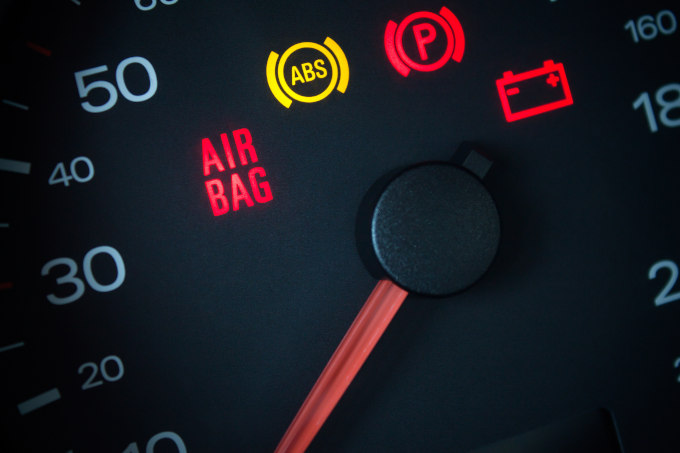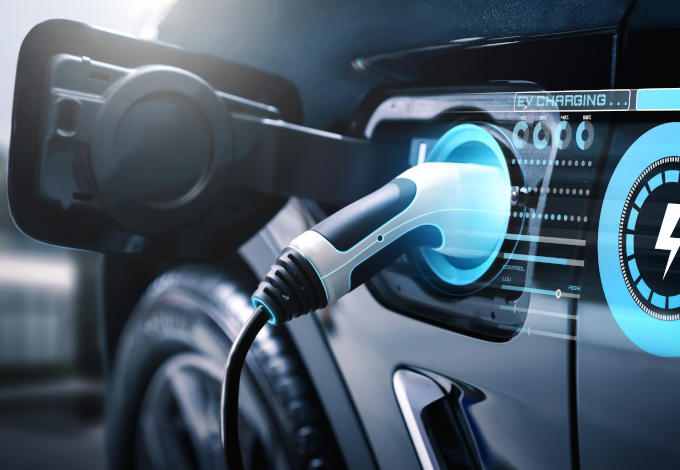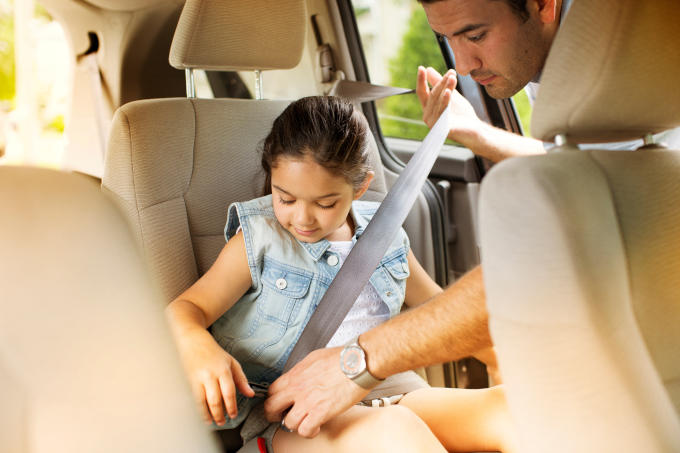Your car's dashboard is like its communication center. It's where your vehicle speaks to you, conveying important information about its health and performance. Among the many signals your car sends your way, the most immediate and attention-demanding are the warning lights. These small, colorful symbols can sometimes be confusing, but they serve a vital role in ensuring your safety and your car's well-being. In this article, we'll take a deep dive into common dashboard warning lights, explaining what they mean and providing guidance on what to do when they illuminate. We'll also discuss when it's crucial to seek professional assistance.
Picture this: You're cruising down the highway, enjoying your drive when suddenly a bright, unfamiliar light pops up on your car's dashboard. Panic sets in as you wonder, "What does this mean? Is my car about to break down?"
Dashboard warning lights are like the car's way of saying, "Hey, we need to talk!" Ignoring them is akin to ignoring a persistent cough – it might seem harmless at first, but it could lead to more significant problems down the road. To avoid costly repairs and ensure your safety, it's essential to understand these warning lights and act promptly when they appear.
The Most Common Dashboard Warning Lights
Let's start by examining some of the most common dashboard warning lights and what they signify:
1. Check Engine Light
The check engine light, often depicted as an engine-shaped icon, is one of the most dreaded warning lights. It can indicate various issues, from minor problems like a loose gas cap to more severe engine or emissions system malfunctions. When this light comes on, it's best to have your car's diagnostics system checked to identify the specific issue.
What to do: If the check engine light comes on but your vehicle seems to be running fine, it's generally safe to drive cautiously to a mechanic for diagnosis. However, if the light is flashing or your car starts behaving erratically, it's best to pull over immediately and have it towed to a professional for inspection.
2. Battery Light
The battery light, typically resembling a battery icon, indicates an issue with your car's charging system. This could be a problem with the alternator, the battery itself, or the electrical system.
What to do: If the battery light illuminates while you're driving, it's a sign that your vehicle is running on battery power alone, and the alternator is not charging the battery. This situation can lead to a stalled engine. It's best to turn off any non-essential electrical components (e.g., A/C, radio) and head to a mechanic as soon as possible.
3. Oil Pressure Warning Light
The oil pressure warning light, often depicted as an oil can or oil drop icon, indicates a problem with your car's lubrication system. Low oil pressure can lead to engine damage if not addressed promptly.
What to do: When this light comes on, pull over and turn off your engine immediately. Check your oil level and add oil if it's low. If the oil level is fine, have your car towed to a mechanic, as running the engine with low oil pressure can be catastrophic.
4. Coolant Temperature Warning Light
The coolant temperature warning light looks like a thermometer submerged in liquid and indicates that your engine is overheating. Overheating can cause severe engine damage.
What to do: When this light comes on, pull over and let your engine cool down. Check the coolant level and add more if necessary. If the light persists, it's crucial to have your car inspected by a professional to identify and address the cause of the overheating.
5. Brake System Warning Light
The brake system warning light, often depicted as an exclamation point inside a circle, can have several meanings. It could indicate that your parking brake is engaged, low brake fluid, or a problem with the anti-lock braking system (ABS).
What to do: If the parking brake is not engaged and the light remains on, it's advisable to check the brake fluid level. If it's low, top it up and have your brakes inspected for leaks. If the light continues to illuminate, it's essential to seek professional assistance immediately, as brake issues compromise your safety.
6. ABS Warning Light
The ABS warning light, typically depicting the letters "ABS" inside a circle, signifies a problem with the anti-lock braking system. This system helps prevent wheel lockup during hard braking, improving stability and control.
What to do: While your car's conventional braking system should still work when the ABS light is on, it's crucial to have the ABS system checked. In slippery road conditions, the ABS system can make a significant difference in your ability to stop safely.
7. Airbag Warning Light
Airbag Light
The airbag warning light, often depicting an airbag icon, indicates a problem with your car's airbag system. Airbags are a critical safety feature that can protect you in the event of a collision.
What to do: When this light comes on, it's essential to have your airbag system inspected by a professional. A malfunctioning airbag system may not deploy properly in an accident, putting you at risk of injury.
8. Tire Pressure Monitoring System (TPMS) Light
The TPMS light looks like a flat tire and illuminates when one or more of your car's tires has low pressure. Proper tire pressure is crucial for safety, fuel efficiency, and tire longevity.
What to do: Check your tire pressure using a gauge and add air to any underinflated tires to reach the recommended pressure. If the light persists, it's possible you have a puncture or a faulty TPMS sensor that needs professional attention.
9. Transmission Temperature Warning Light
The transmission temperature warning light, usually depicting a thermometer next to a gear, indicates that your transmission is overheating. This can lead to transmission damage and poor performance.
What to do: Pull over and let your vehicle cool down if this light comes on. Overheating can result from towing heavy loads or driving in extreme conditions. If the light remains on after cooling down, it's important to have your transmission inspected to prevent further damage.
10. Fuel Warning Light
The fuel warning light, often shaped like a gas pump, indicates that your fuel level is critically low. Running out of fuel can leave you stranded and potentially damage your fuel system.
What to do: When this light comes on, find a nearby gas station and refuel as soon as possible. Running on empty is not only inconvenient but also potentially harmful to your car's engine.
Responding to Dashboard Warning Lights
Understanding what these warning lights mean is the first step in responding to them effectively. However, it's equally important to know how to react when they illuminate. Here's a general guideline on how to respond to dashboard warning lights:
- Stay Calm: When a warning light appears, try not to panic. Take a deep breath and focus on finding a safe place to pull over if necessary.
- Check for Immediate Issues: Assess the situation. Are there any unusual noises or smells? Is your car behaving differently? This information can help you gauge the severity of the problem.
- Refer to Your Owner's Manual: Your owner's manual is an invaluable resource when dealing with warning lights. It provides specific information about what each light means for your particular make and model of car.
- Address the Issue: If you can identify a simple fix, like tightening the gas cap or adding oil or coolant, go ahead and do so. However, be cautious not to open the radiator cap or touch any hot engine components. If you're uncertain about the problem or don't have the necessary tools, it's best to leave it to the professionals.
- Continue With Caution: If the warning light is not flashing and your vehicle seems to be running normally, you can continue driving to a nearby service center or mechanic. However, maintain a reduced speed and avoid heavy acceleration or braking.
- Stop Driving if Necessary: If the warning light is flashing, your car is making unusual noises, or you notice a significant change in performance, it's crucial to pull over immediately and turn off the engine. Continuing to drive in these conditions can lead to further damage and potentially dangerous situations.
- Call for Assistance: In situations where you cannot safely drive your vehicle, contact a tow service or roadside assistance. Explain the issue, and they will arrange for your car to be towed to a nearby service center.
- Seek Professional Inspection: Once your car is in the hands of a professional mechanic, they can perform a comprehensive diagnosis using specialized tools and equipment to identify and resolve the issue. Follow their recommendations for repairs and maintenance.
When to Seek Professional Assistance
While some dashboard warning lights may have simple fixes, others indicate more complex and potentially dangerous problems. Here are some situations when it's crucial to seek professional assistance immediately:
- Check Engine Light Flashing: If your check engine light is flashing, it usually means there's a severe issue with your engine that requires immediate attention. Continuing to drive in this condition can cause further damage.
- Oil or Coolant Leaks: If you notice a pool of oil or coolant under your car when parked, it's a sign of a significant fluid leak. Continuing to drive can lead to engine damage or overheating.
- Engine Overheating: If the coolant temperature warning light comes on, and your engine is visibly overheating (smoke or steam coming from the hood), pull over immediately and turn off the engine. Driving with an overheated engine can cause catastrophic damage.
- Brake Issues: Any problems related to the brake system, including the brake system warning light, require immediate attention. Brake problems compromise your ability to stop safely.
- Airbag Malfunction: If the airbag warning light is on, it means there's a problem with your car's airbag system. This could result in the airbags not deploying correctly in a collision, posing a severe safety risk.
- Transmission Problems: A flashing transmission temperature warning light or noticeable issues with your car's transmission, such as slipping gears or harsh shifting, require professional inspection.
- Multiple Warning Lights: If several warning lights come on simultaneously or your car exhibits multiple issues at once (e.g., engine overheating and low oil pressure), it's a sign of a more significant problem that needs immediate attention.
- Unusual Noises or Smells: If you hear unusual noises, such as grinding, knocking, or hissing, or notice strange smells like burning rubber or gasoline, these could indicate serious issues that require professional diagnosis.
Remember that modern vehicles are equipped with advanced diagnostic systems that can detect problems early. Ignoring warning lights or delaying necessary repairs can lead to more extensive and costly issues down the line.
Dashboard warning lights are your car's way of communicating with you, alerting you to potential problems and ensuring your safety on the road. Understanding what these lights mean and how to respond when they illuminate is essential for maintaining your vehicle's health and preventing costly repairs. In many cases, addressing warning lights promptly can save you from more significant issues and keep you safe on the road.
While some warning lights may have straightforward solutions, others require the expertise of a professional mechanic. Never ignore a flashing warning light or signs of significant issues like fluid leaks, overheating, or unusual noises. Seeking immediate assistance when necessary can help you avoid accidents, protect your vehicle, and ensure your peace of mind while driving. So, the next time a warning light appears on your dashboard, remember that your car is trying to tell you something – and it's best to listen. Don’t forget to schedule checkups for your vehicle!











